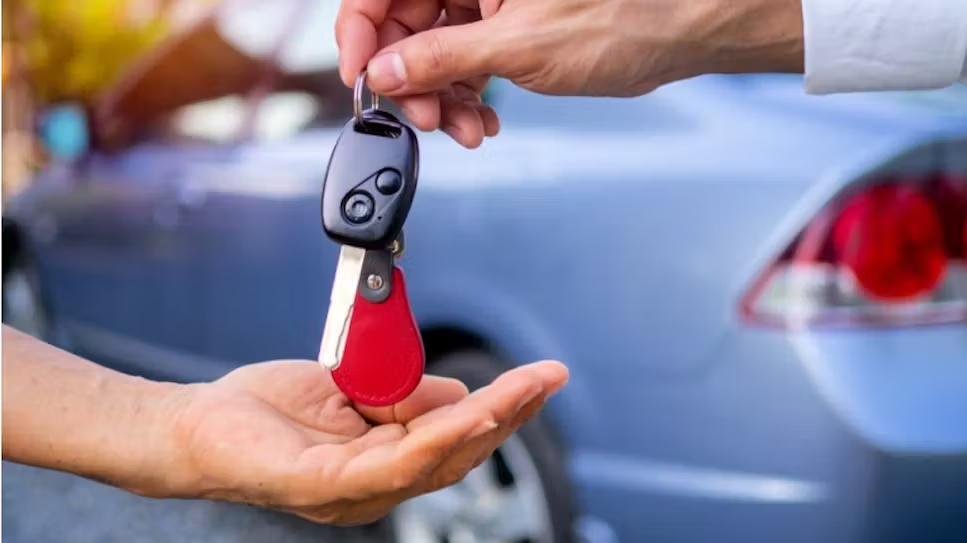Buying a new Ford car is always exciting—there’s nothing quite like the feel of a brand-new vehicle, the new car smell, and the knowledge that you’re about to enjoy cutting-edge technology and engineering. However, once the deal is closed, the next crucial step is to get your new car registered. Registration is a legal necessity and is required before you can drive your car on public roads. The process can sometimes be time-consuming, but with the right knowledge and preparation, it can be completed quickly and efficiently. Whether you’re buying from a dealer like RobSight Ford or another trusted seller, these tips will help you get your new Ford car registered fast and hassle-free.
Understand the Car Registration Requirements in Your State
Each state in the U.S. has its specific vehicle registration requirements. These can include emissions tests, proof of insurance, vehicle inspection, and specific forms of identification. Before you even drive off the lot with your new Ford, check your local DMV or your state’s department of transportation website to understand the exact requirements. Knowing what paperwork and steps are necessary in advance will save you a significant amount of time.
Get All Your Documents Ready Beforehand
Having all the necessary documents in one place will streamline your registration process.
Organize these documents in a folder, either physical or digital, before heading to the DMV. Double-check each one to ensure all details are correct and match across the paperwork.
Register Through the Dealership When Possible
One of the most convenient ways to handle vehicle registration is to have the dealership do it for you. Many Ford dealerships offer registration services as part of the car-buying process. This means they’ll submit all the necessary documents on your behalf and provide you with temporary tags so you can drive legally while waiting for your official registration and plates. Always ask your dealer if they can take care of this, especially if you’re short on time.
Make an Appointment with the DMV
DMVs are notorious for long wait times, especially in larger cities. Making an appointment online can save you hours. Most DMV websites allow you to schedule a specific time slot, so you can walk in, get served quickly, and avoid wasting an entire day. Be sure to bring printed confirmation of your appointment and arrive 10–15 minutes early.
Use Online Registration Services If Available
Many states now offer online registration services, particularly for brand-new vehicles bought from licensed dealerships. If your state supports this, it’s often the fastest route to get your car registered. You’ll be able to upload your documents, pay fees, and receive your registration paperwork and plates via mail, all without setting foot in a DMV office.
Ensure You Have Active Insurance
No registration can proceed without valid car insurance. Make sure your policy is active and that your coverage meets your state’s minimum requirements. The DMV will typically ask for proof in the form of an insurance card or digital document. If you’re switching insurance providers after buying your car, coordinate this transition carefully to avoid lapses in coverage.
Pay All Required Fees and Taxes Promptly
Registration won’t be processed until all fees are paid. Keep in mind that these fees vary significantly depending on the state and the vehicle’s value. Prepare to pay by credit/debit card or check, and always ask for a receipt in case you need to track your payment status.
Choose the Right Registration Type
In some cases, you’ll be asked whether you want a one-year or multi-year registration. Opting for a multi-year registration can reduce the frequency of DMV visits, but the initial cost will be higher. Also, in some states, registering your vehicle as a personal or commercial vehicle can affect taxes and fees. Choose the type that best fits how you plan to use your Ford.
Double-Check the Vehicle Identification Number (VIN)
The VIN on your vehicle needs to match exactly with the VIN on your paperwork. If there’s even a small typo, the DMV will not process your registration. Check the VIN on the dashboard of your new Ford (visible through the windshield) and compare it against your sales documents and the Manufacturer’s Certificate of Origin.
Be Prepared for Vehicle Inspection or Emissions Testing
Depending on your state, you may need to have your vehicle inspected for roadworthiness or emissions compliance. This is especially true in states like California or New York. Even though your Ford is brand new, it’s essential to check if your state mandates these tests for all vehicles. Schedule the inspection early and bring the certification with you when registering.
Use a Power of Attorney If Someone Else Is Registering for You
If you’re unable to register the car yourself, a family member or friend can do it on your behalf, provided they have a signed and notarized power of attorney form. This can be a helpful workaround if you’re busy or traveling, and it ensures your car can still be registered without delay.
Check for Temporary Tags and Deadlines
When buying from a dealer, you’ll usually receive temporary registration tags that are valid for 30 to 90 days. Mark your calendar with the expiration date of these tags so you can ensure your permanent registration is processed well before then. Driving with expired temporary tags can lead to fines or impoundment.
Stay in Contact with the Dealer and DMV
Even after you’ve submitted everything, don’t assume all is going smoothly. Follow up with your dealer and/or DMV to confirm that your registration is being processed. If there are any missing documents, errors, or delays, catching them early gives you time to resolve the issue before your temporary tags expire.
Consider Using a Title and Registration Service
If you’re in a hurry and don’t want to deal with the DMV yourself, many cities have third-party services that specialize in car registration and title work. These agencies are licensed and can handle all paperwork for you—for a fee. This can be a valuable option if you need your registration processed urgently or prefer a more hands-off experience.
Store Your Registration Documents Safely
Once your registration is complete, keep your documents secure. Place your registration card in your glove compartment and keep a digital copy stored securely in your phone or cloud account. If you lose your registration, replacing it can take time and cause unnecessary stress.
Conclusion
Registering your new Ford car doesn’t have to be a frustrating or time-consuming process. By preparing the necessary documents ahead of time, understanding your state’s requirements, and using available resources like dealership registration services, online tools, and DMV appointments, you can speed through the process with ease. The key is organization, proactiveness, and attention to detail. Taking these steps will get you on the road faster so you can fully enjoy your new Ford without administrative headaches.

















